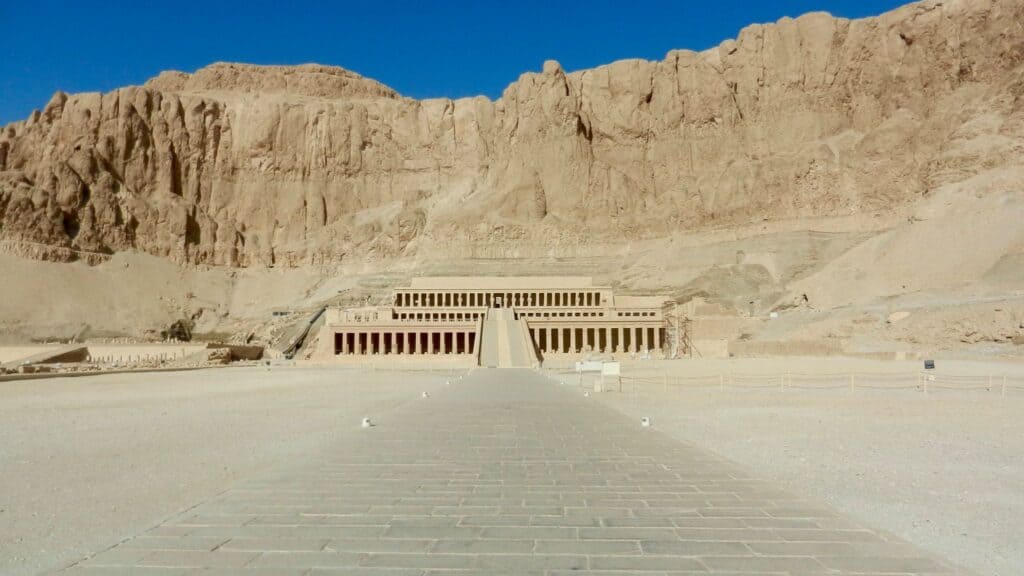With its hidden archeological treasures buried beneath sun-scorched sands, time-worn monumental ruins, and epic cultural history, Egypt has fascinated and inspired storytellers throughout the ages. Its gargantuan stone constructions, hermetically sealed tombs, and resplendent riparian vistas have served as engrossing backdrops for countless tales—and have typically drawn tourists by the millions on Egypt tour packages each year.
The COVID-19 pandemic brought a temporary halt to those tourism numbers in 2020—and while there’s encouraging news on that front, seeing the sights in person will have to wait just a little while longer. Meanwhile, there’s no better time than the present to immerse yourself in the myriad media offerings that have cast Egypt as a star character. We’re eager to take you on a guided tour of Egypt, but for now, we’re thrilled to let film and literature take the lead and transport you to the land of the pharaohs. Here are some of our favorite books and movies set in modern, historical, and ancient Egypt.
Books Based in Egypt
Chronicle of a Last Summer — Yasmine El Rashidi, 2016
Observation, passive but hurriedly meticulous, forms the core content of Yasmine El Rashidi’s 2016 novel Chronicle of a Last Summer, centered around the musings and experiences of a narrator whose name is not given to the reader. A young girl in the novel’s first act, the narrator records and recounts her summer days in 1984 Cairo—listening to her family’s conversations, daydreaming over the Nile, absorbing the silent state-media television.
As we follow the novel from one timeframe to the next—an advance of 15 years sees our attuned narrator as an aspiring filmmaker, and another then again as a writer—the quiet watchfulness of the characters begins to beg weightier questions about responsibility, complicity, and oppression under a strict regime.
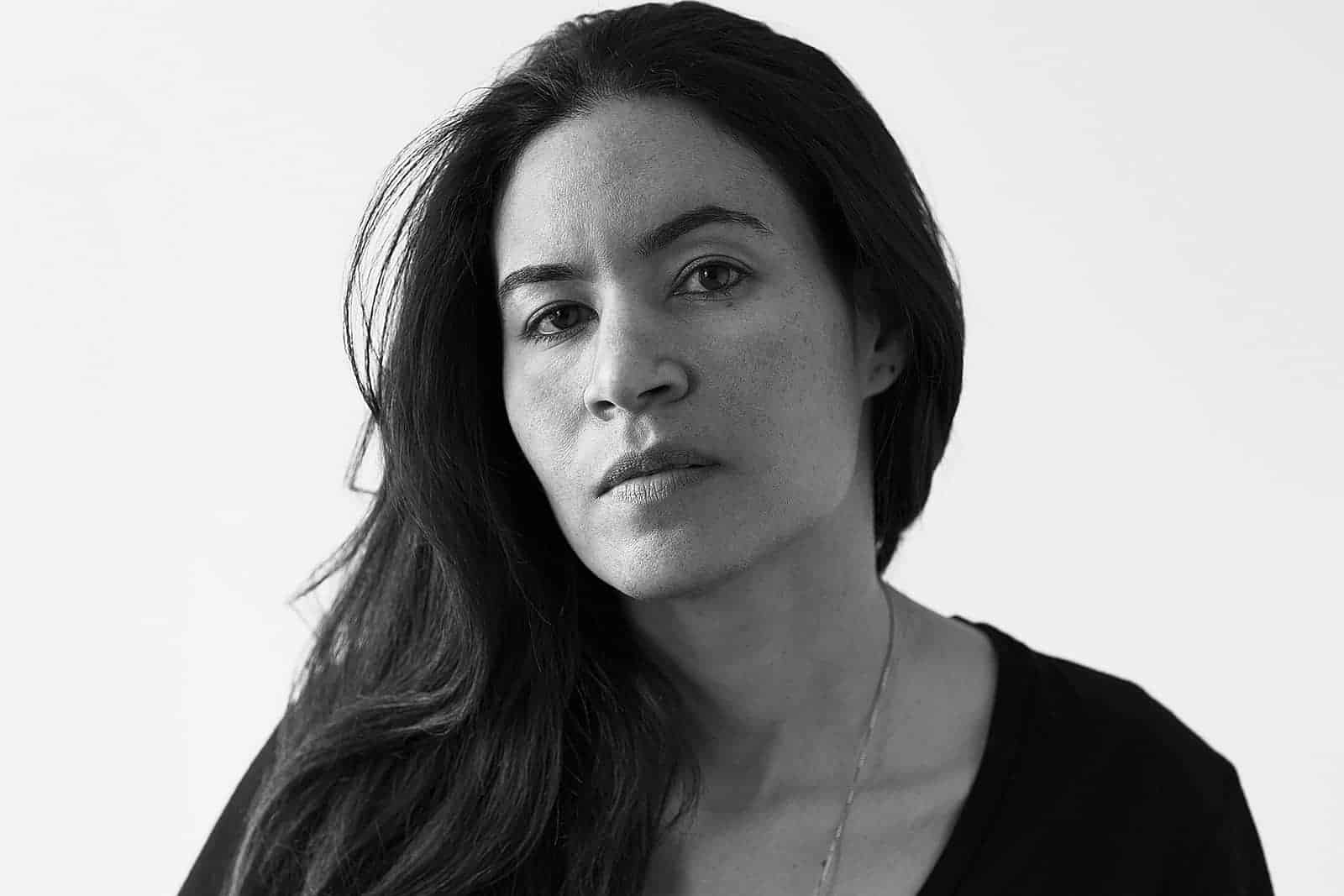
And while the breathing characters come and go, often with scarce or indifferent exposition, the reader becomes well acquainted with their constant home: Cairo. Across the full span of the story, we are treated to an emergent character of the city itself, the living, growing, ever-changing, and ever-same city—its contents carefully noted, its workings lovingly detailed, enumerated, mulled over.
The Egyptian — Mika Waltari, 1945
The 14th century BC was a time of tumultuous change in Egypt, marked by dramatic shifts in leadership, religion, and art. In Mika Waltari’s The Egyptian, the reader is treated to an intimate view of the social and political dynamics of the era, as recalled by an ambitious and principled physician who rises into the pharaoh’s inner circle: the titular Egyptian, Sinuhe.
As Sinuhe tells of his life’s travails both out from Thebes and back again, we soon find ourselves in the heart of the drama of ancient Egypt’s 18th dynasty—circa 1353 BC—following the undertakings of the enigmatic god-king Akhenaten as he establishes both a revolutionary religious order and a new capital city.
Though the narrator of The Egyptian is himself fictional, the novel is nonetheless widely praised for its rich historical accuracy and detail, offering an uncommonly engaging account of both ancient Egyptian life as well as the lives of its ensemble cast of historical figures—from the pharaoh’s wife Nefertiti to his successor (and scholastically debated relation) King Tutankhamun.
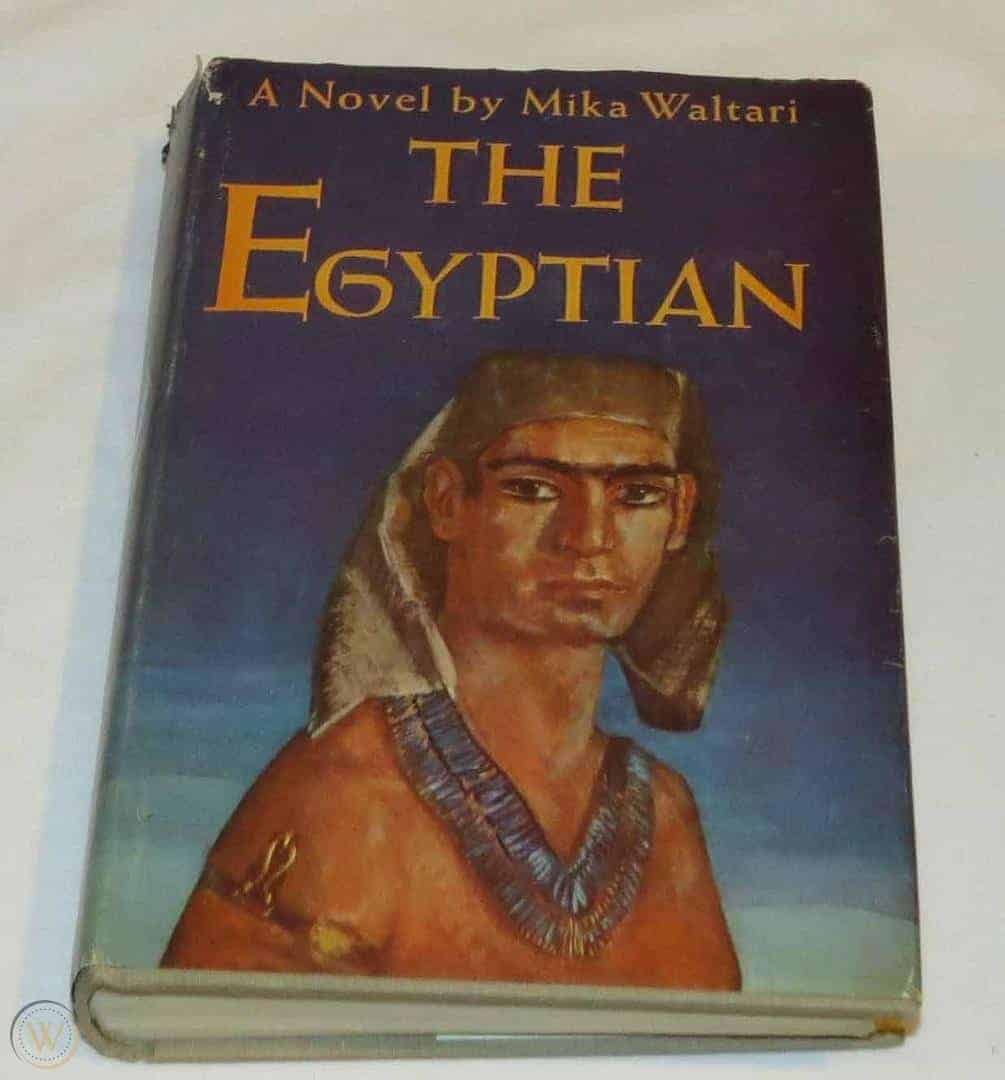
Partially inspired by the ancient Egyptian tale “The Story of Sinuhe,” the 1945 novel is considered a high mark of Finnish literature (numerous translations exist for those whose suomen kieli is a little rusty) and is the only novel of the country to be subsequently made into a Hollywood movie.
Nefertiti — Michelle Moran, 2008
For further perspectives on the life and reputation of the “heretic pharaoh” Akhenaten, there are few better authors to turn to than Nobel Prize winner Naguib Mahfouz. His Akhenaten: Dweller in Truth explores the pharaoh’s accomplishments and tribulations through a series of letters from his closest advisors and cohorts—all imagined in nuanced & idiosyncratic detail. Meanwhile, Michelle Moran takes a closer account of the leader’s famed wife in Nefertiti, a familial tale of the queen’s roles—and possible rule—that breathes new life into the drama of Egypt circa 1350 BC.
The Man in the White Sharkskin Suit — Lucette Lagnado, 2008
Written in the kind of purposeful and elegant prose that seems almost effortlessly graceful, Lucette Lagnado’s The Man in the White Sharkskin Suit unfurls the tale of a Jewish family’s exodus from Egypt in 1963 following the cascading events of the Suez Crisis. The author’s father, the eponymously dressed boulevardier of Malaka Nazli Street, is certainly the central figure of the family memoir—his exploits before and struggles after the departure threading through the lives of everyone around him. But throughout the telling, the true anchor to which everyone and everything is indelibly tied—though the family crosses first a sea and then an ocean in their emigration—remains old Cairo.
The memories conjured up of the Lagnado’s apartment on Malaka Nazli paint a picture of Cairo hardly known to outsiders and nearly forgotten to all but the older generations of Cairenes. Through the eyes of her father, Lagnado first vividly evokes and thereafter wistfully reminisces the shine and swagger of the former “Paris of Africa,” the city of pomp and splendor once esteemed as one of the world’s most cosmopolitan scenes.

Should you one day find yourself on a luxury Egypt tour of Cairo, the book’s relations will help reveal this lesser-seen era of the thrumming modern metropolis. If you can manage to pull your attention away from the frenetic buzz and vibrant energy surrounding you in present-day Cairo, look above awning-packed avenues to inconspicuously ornate balconies, gaze down long boulevards lined with faded imperial facades, and adjust your eyes to see past the patina of clamorous immediacy that covers all of the city—and discover tucked-away snapshots of a city in the swankier heydays of its hedonistic youth.
Death on the Nile — Agatha Christie, 1937
Looking forward to the prospect of a luxurious Egypt vacation package, complete with a relaxing and decadent cruise down the Nile river? You’re not the only one—Hercule Poirot, the famed detective of over thirty Agatha Christie novels, sets out to enjoy just such a respite at the outset of Christie’s 1937 murder-mystery novel Death on the Nile. Spoiler alert: The vacation did not go as swimmingly as planned.
Detective Hercule Poirot, enjoying the first days of a much-deserved Egyptian sabbatical in Cairo, is approached by a wealthy socialite requesting some aid in dissuading the attentions of an embittered romantic rival whose fiance she has just wed. Though intending to stick to his own restful plans, the never-off-the-clock gumshoe begins picking up on unusual machinations right away—and once aboard a steamer in Luxor bound for Aswan, finds that all involved parties happen to be on board the same ship.
It wouldn’t do to give away too much more of the plot for a novel by the best-selling mystery writer of all time, especially one with as many expertly crafted twists and deviously clever characters as Death on the Nile—but as the title suggests, the gentle cruise down the Nile isn’t all glittering waters by moonlight.
Movies Based in Egypt
Death on the Nile — John Guillermin, 1978
Earning back-to-back billing on our list of Egyptian-set media is Agatha Christie’s Death on the Nile—this time in its 1978 British film adaptation.
While the main points of the plot (unrevealed here as before) are largely the same between the two pieces, the film earns redundant recommendations for its who’s-who cast of 20th-century actors and actresses, from Peter Ustinov in the role of detective Hercule Poirot to Dame Maggie Smith as the aggrieved Miss Bowers, as well as its use of many famous location shots.
The film portrays a wonderful array of sites you’ll be thrilled to visit on a guided tour of Egypt—though it’s worth noting that some artistic leniency must be granted in their specific geography and order. The harassed lovers of the tale are stalked at the Giza pyramids, while detective Poirot makes his appearance nearby at the Sphinx. The vacationing parties embark on their Nile cruise from the hotel Sofitel Legend Old Cataract Aswan, and rocky calamity is barely avoided at the Temple of Karnak. Once again, the Nile shows it can’t keep secrets, and the things get confrontational beneath the enormous sculptures at Abu Simbel. That’s all the clues we’ll spill ahead of time—we’ve already said too much!
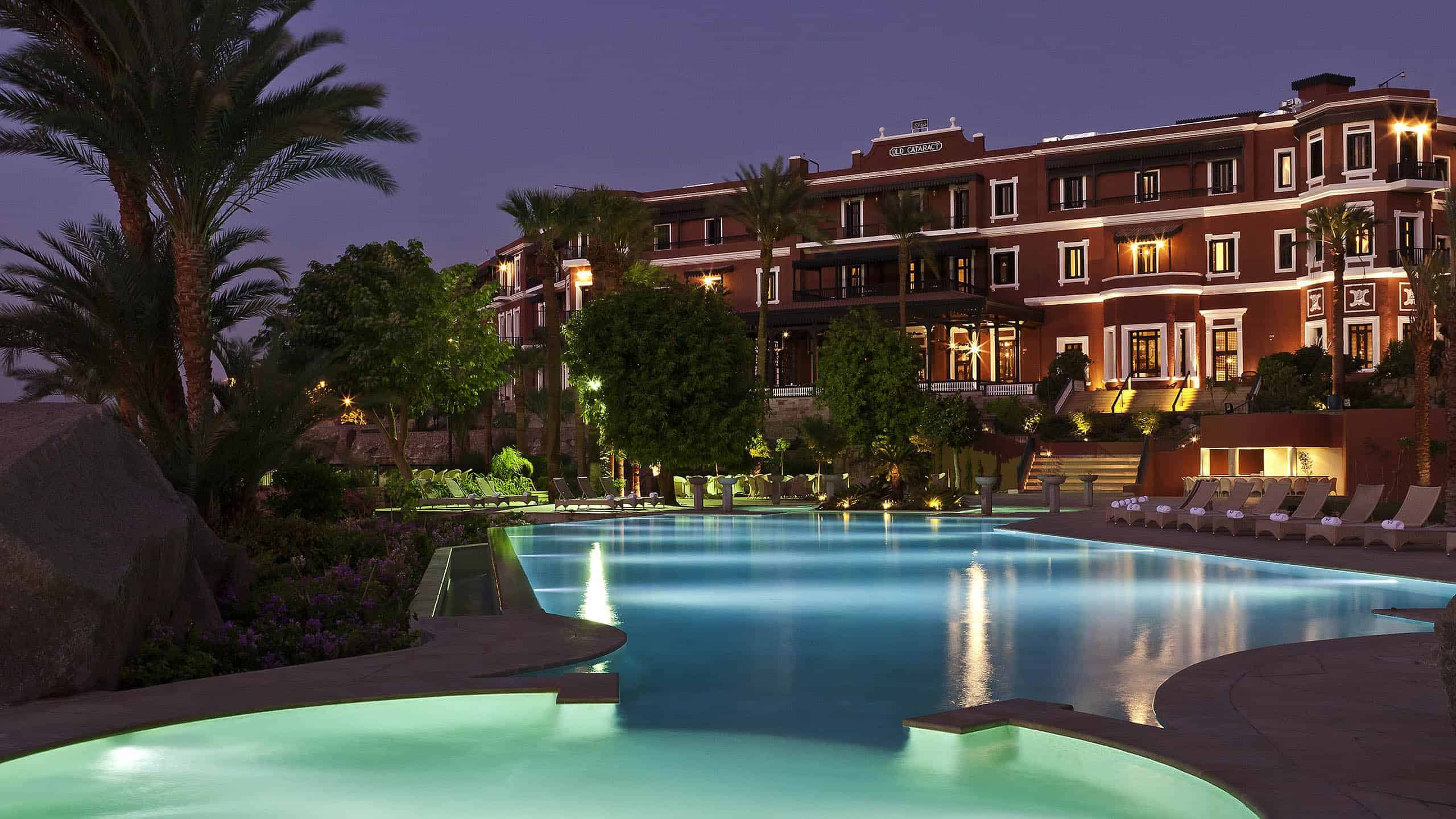
Raiders of the Lost Ark — Steven Spielberg, 1981
It’s a slight stretch to include the first installment of the Indiana Jones franchise here: while much of the action in the action-packed film takes place in Egypt, most of the filming was done over 1,000 miles away in Tunisia. Nevertheless, it’s not so often that one of the most highly regarded films of all time is also the one that first escorted us into the streets and buildings of 1930s Cairo (read: Kairouan, Tunisia) and out onto the scorching sands of the Egyptian desert—then later, claustrophobically (and ophidiophobially) beneath them.
Harrison Ford cements his leading-man status as the iconic archeologist “Indiana” Jones, tasked with tracking down the location of the biblical Ark of the Covenant—an immensely powerful artifact thought to be buried under the ruined city of Tanis in the Nile delta. The Ark is discovered, but as the Egyptian god-kings have their superstitious curses, so too does the Hebrew god have his wrath—in this case, making for unforgettable movie magic.
The Yacoubian Building — Marwan Hamed, 2006
Marwan Hamed’s major-picture directorial debut, The Yacoubian Building, an Egyptian-made film adaptation of esteemed author Alaa Al Aswany’s best-selling novel of the same name, was released to quite the reception—taking in a record-making 6 million Egyptian pounds in its opening week.
The 2006 film, set almost wholly in the eponymous real-life building in downtown Cairo, follows the thickly interwoven lives of the once prestigious—and once prestigiously occupied—building’s various characterful tenants. A scheming and ambitious tailor, an old philandering engineer, a jaded songstress, and a self-made millionaire-shoeshiner compromise just some of the main cast, who, together with their apartment building, represent the various stereotypes and political components of 1990s Egyptian society. Dealing straightforwardly with some touchy and taboo topics, the film offers a firm critique of life following the 1952 Coup d’etat—but balances its harshness with signs of hope and humanity.
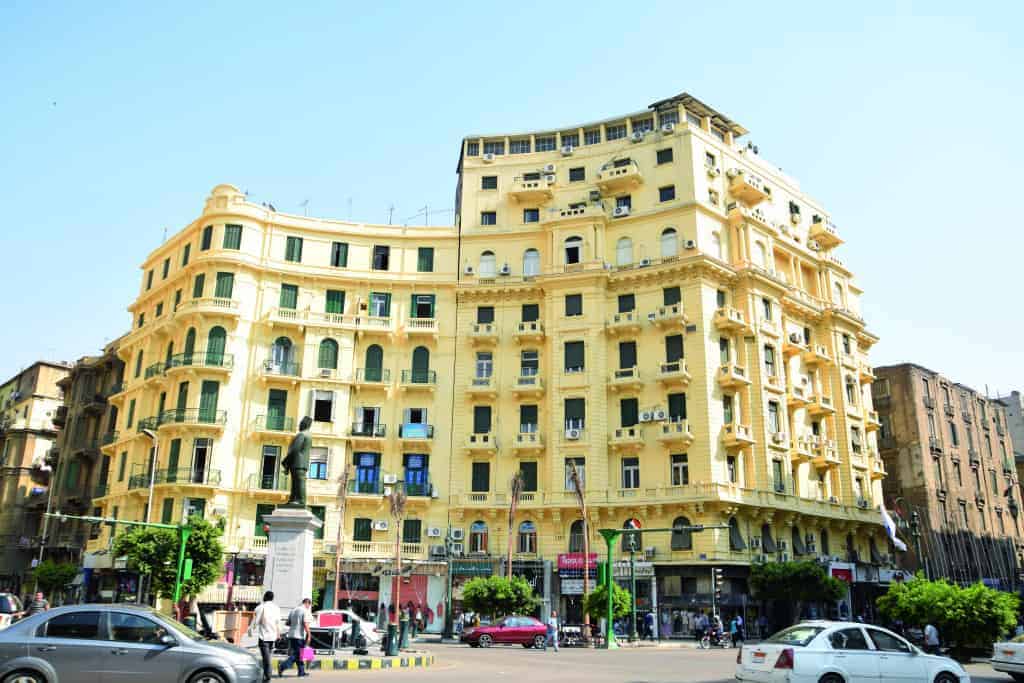
Released only in Arabic, the English subtitles veer left of fluent, but the earnest emoting and skillful storytelling can confidently carry Anglophones through an immersive and candid exploration of contemporary Egyptian society.
Cairo Time — Ruba Nadda, 2009
A slow-burning love affair marks the centerpiece of this award-winning romantic drama, patiently and carefully led by actress Patricia Clarkson in her role as the unexpectedly-alone-on-vacation wife, Juliette. Saved from her solitude in Cairo by her husband’s handsome and unmarried associate, Juliette warms slowly both to her surroundings and her curiously convenient companion while making no drastic advances on either front.
While trading a bit freely in such tropes as sprinkled shukran’s and flirtatious eye contact over tea, the film does well to match its pacing with Juliette’s experience of Cairo’s more leisurely meter and leads the viewer to wonder if the story will stick to what feels like a non-standard love story. That’s regarding the people, though—the director’s love of Cairo, all bustling markets and monument walks and moonlit pyramids, is as obvious as a cheeky blush.
